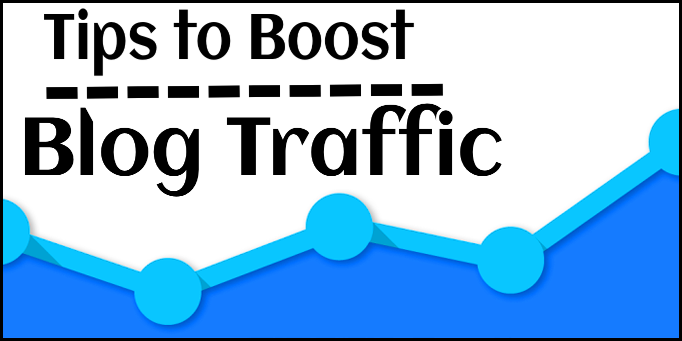9 Spam-Free Recipes for Nurturing and Converting PPC Leads
As a marketer, your job doesn’t stop at lead generation. You have to nurture prospects who indicate interest in your offer.
According to MarketingSherpa, 79% of marketing leads fail to convert into sales, primarily because of poor lead nurturing practices.
The beauty of pay per click (PPC) leads is that they’re often targeted and have a good chance of converting into customers, if you follow a strategic and proven path.
Recent research has found that 50% of leads are qualified, but not ready to buy.
This reliable data about leads should tell you that it’s not all about generating leads, because anyone can do that. Instead, the real success lies in getting the best results out of each lead.
Regardless of which PPC network you generat your leads from, you have to understand and develop your sales funnel.
You may give away a whitepaper or report to prospects and get them into your funnel. Once they’re there, you have to move them down the funnel, with high-quality, custom content that will appeal to their needs and wants.
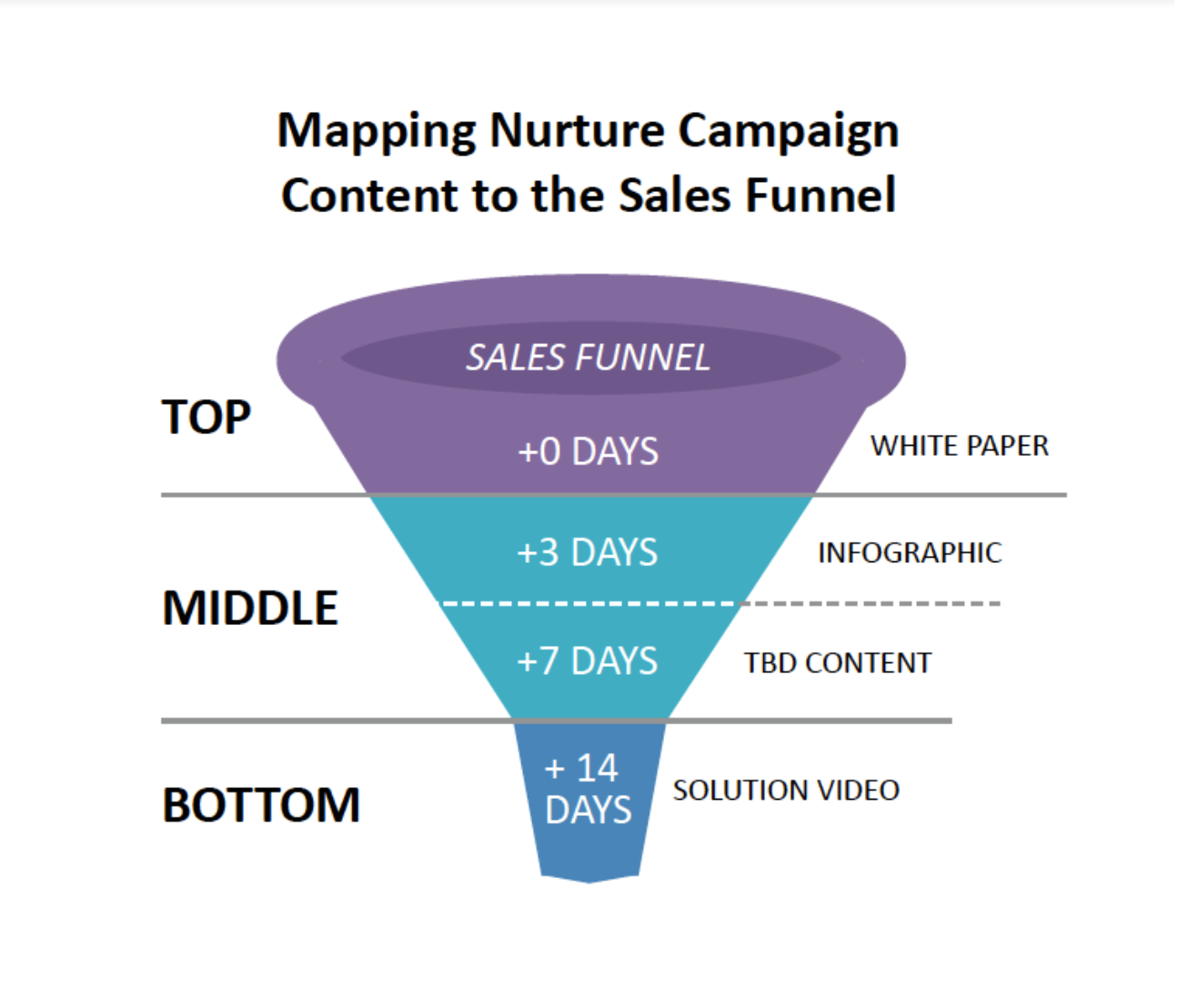
Download this vital cheat sheet for nurturing and converting PPC leads.
Let’s explore the 9 spam-free recipes for lead nurturing and conversion:
Strategy #1: Launch a 7-Day Email Course
Why should you create a 7-day email course? Simply put, email is the most powerful way to nurture and build trust with your leads. Lots of experts are using it. Oli Gardner, co-founder of Unbounce, for example, uses it to nurture his leads:
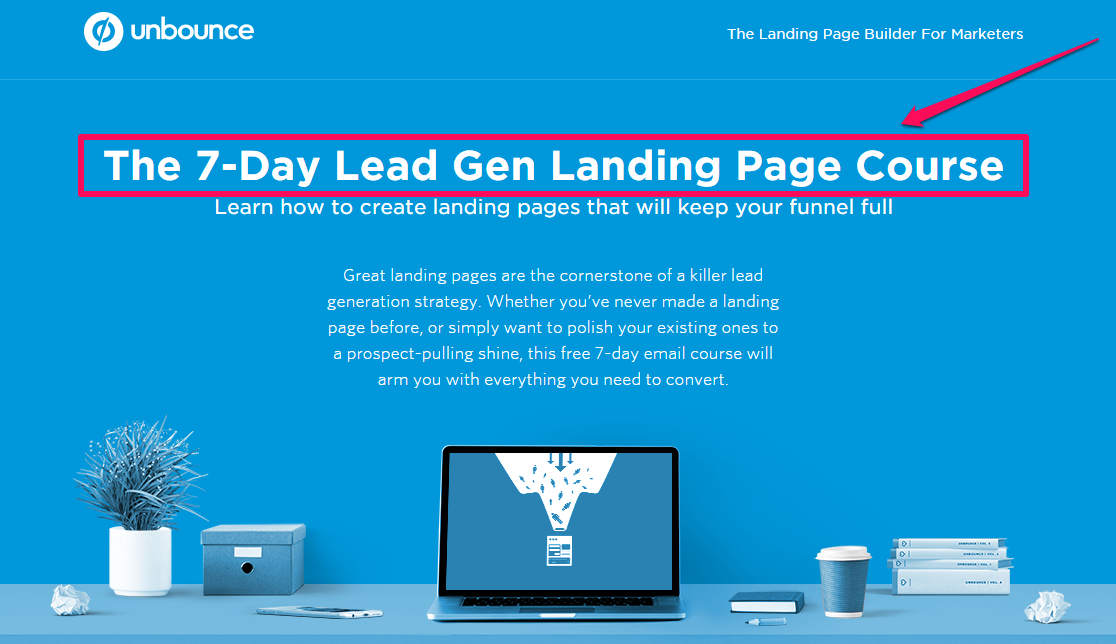
A 7-day course delivered via email will position you as the expert in your industry. You can build the kind of trust that’ll help you generate more sales. Econsultancy’s statistics show that the ROI on email will exceed most other channels.
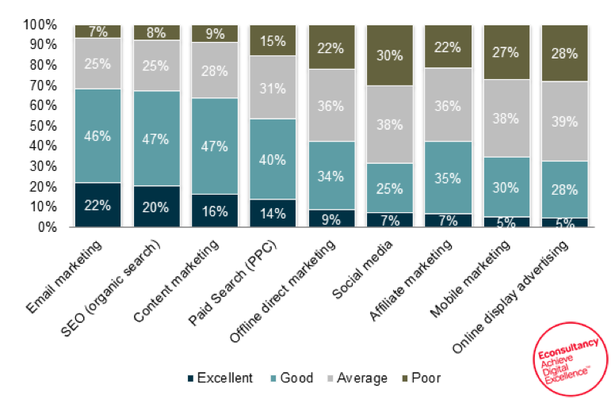
If you want to supercharge your leads, it’s not enough to just attract potential customers to your email list. Once they’re there, you’ve got to build a relationship with them. Email marketing is a powerful technique for connecting deeply with that audience.
According to the Emarketing Blog, the average ROI, per $1 in email ad spending, is close to $40. So, if you’ve spent $20 on Google AdWords ads, your ROI should be somewhere near $800.

That’s not guaranteed, of course. But, overall, email marketing is proven to be powerful and several companies in diverse industries are benefiting from using email with their list.
But, why a 7-day email course and not a 30- or 45-day email course? Well, it’s because of the “rule of 7.”
What is that? Here’s how Jim Domanski, President of Teleconcept Consulting, defines it:

So, a 7-day email course that’s well-designed and packed with value gives you those seven points of contact, without wasting effort app to videos iphone. When strategically delivered, such a course will nurture your leads better than a 30-day course – that’s overkill and might even bore your subscribers.
Nurturing your leads makes all of the difference. The Annuitas Group reported that nurtured leads make 47% larger purchases, compared to non-nurtured leads.

Your 7-day email course should start the moment you convert a lead into an email subscriber.
Once they opt in, don’t wait until the next day to begin the course. Start immediately – they’re ready to learn. That’s why they took the time to type their email address into your form and click the CTA button.
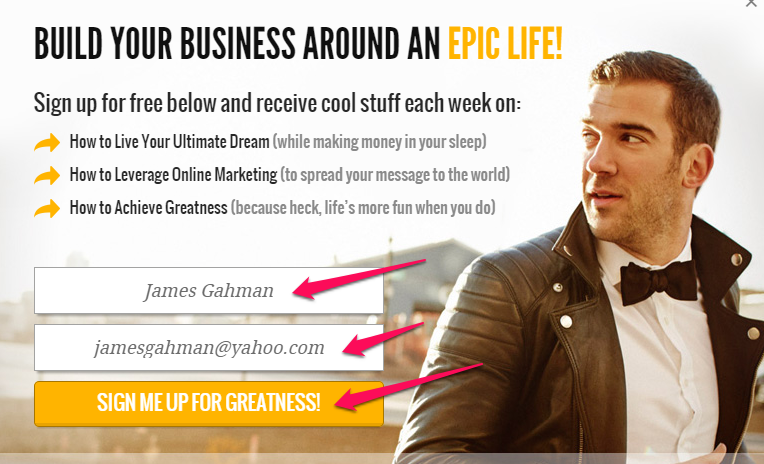
The welcome email, after confirmation, should give them additional information about your course, as well as reward them with a free gift. I like the way FoodTruckr structures their welcome message:
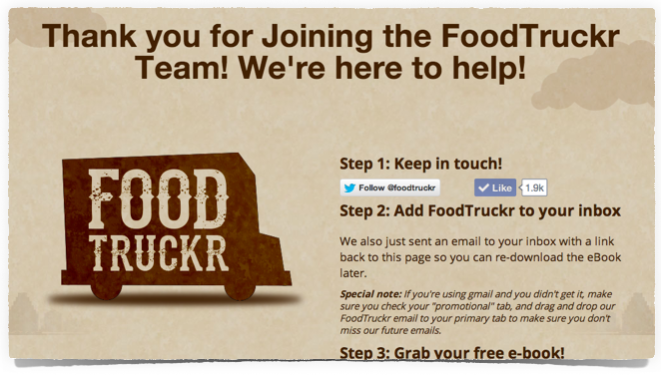
Send the first course within 5 minutes – don’t wait. According to InsideSales, “if you follow up with web leads within 5 minutes, you’re 9 times more likely to convert them.”

Creating a 7-day email course is easy. You just have to understand your customer’s journey or buying cycle. Then, craft each email to educate and lead them into the next phase.
For example, let’s assume that you want to teach business owners how to outsource, in order to save time and money. Your 7-day email course doesn’t necessarily have to take place on 7 successive days. It could follow this format, which sends a new email every other day, starting on day 1:
Day 0: Welcome email (to be sent the same day a prospect subscribes to your list) – Appreciate and welcome your newest subscriber. Send a link to download your free ebook or watch your video.
Day 1: Introduction to outsourcing – your prospects might be totally new to outsourcing. Even if they’re not, an introduction helps them ease into the topic.
Day 2: Set an outsourcing goal – Show your prospects how they can set a goal. Show them how you or someone else is doing it. Show the results of the goal.
Day 4: Share five reasons to outsource – why you think that your prospects need to consider outsourcing some of their work. Sure, they know it can help them become productive (by saving time and money), but you have to show exactly how that happens.
Day 6: Factors to consider when outsourcing – what should your prospects watch out for, when considering an independent contractor for outsourcing? Clearly state the factors and the reasons why.
Day 7: Where to find professional virtual workers – share sites or search strings that your email leads can use to find the best professionals for outsourcing various types of work.
Day 9: How to collaborate – Share tips and a workflow to help them manage their time and work efficiently with the person that they outsourced their work to sql server 2016 express herunterladen.
Note: In each of these emails, you can recommend your premium product, such as an ebook, hardcover book, software, premium online course or any paid service to your leads. You’ve delivered value, so your odds of converting them into customers are very high.
Strategy #2: Create Strong Social Media Engagement
Most marketers don’t take social media engagement seriously. I once made that mistake, but started taking a different approach recently and my results have been pretty significant.
HubSpot says that one of the best things they did was to embrace social media, establish a blog and convince their stakeholders to accept the inbound marketing strategy.
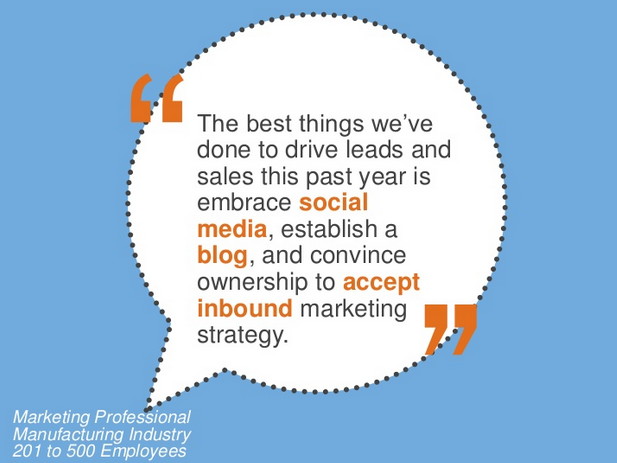
Social media engagement pays greatly. For example, Mu Sigma helped a leading technology provider improve customer engagement and generate $155 million in sales revenue, through social media engagement.
When you generate leads with PPC ads, you’ve got to keep them engaged, not only through their inboxes, but also on Twitter, LinkedIn and Facebook. According to HubSpot, 42% of digital marketers say Facebook performs a critical role for their business.
If you target the right commercial keywords, then your leads will be targeted. The 2013 State of Paid Search Marketing Report, by Versio 2, showed that paid ads generated 64.4% of the clicks for keyword searches that suggest strong commercial intent.
Start using social media for what it’s designed for – connecting and sharing useful and engaging content with a group of people who have asked for it. Don’t try to sell through social media. Instead, use it to cement a strong bond between you and your leads.
The more value you bring, the more engagement you’ll create on your social media accounts.
For example, Pepe Jeans successfully leveraged Facebook to grow its international influence and build strong customer engagement. In the process, it grew its Facebook page to over 2,000,000, a 34% increase in only 6 months.

Strategy #3: Project Your Brand Through Custom Content Marketing
When you create content, don’t forget “who you are.” Your brand is you. You’ve got to project your personality and culture, so that your leads and potential customers can easily connect and know who they’re talking to.
Jeff Bezos says that your brand is what people say about you when you’re not there.

Melbourne Resumes says much the same, defining personal brand as the intersection between how you see yourself and how others see you download the sinfect.
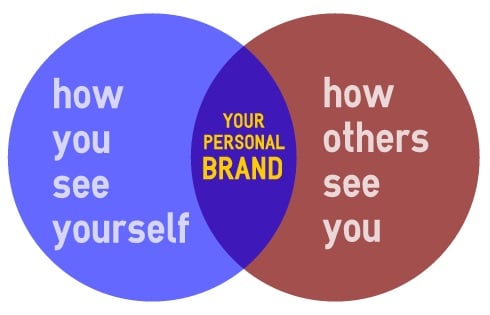
Bringing your personal brand into your custom content (more on this later) will give your leads a deeper understanding of you and your business.
Do you know why many bloggers and digital marketers share their income reports? It’s not because they want to brag. It’s because they want to connect deeply with you, by sharing their process and journey openly.
So, bring your personal brand into your content. You don’t have to share how much you’re earning, though you certainly can. But, be as transparent as you can be. You could even share how much you spent on clothes, like I did here:

If you’re involved in philanthropic work, you could occasionally share stories about that work in your content. This will help connect you with like-minded leads.
That was exactly what Pat Flynn did. To celebrate his 32nd birthday, he decided to build a school in Ghana, with the help of his blog readers.

This helped build his personal brand and exposed him to a new market, in addition to giving his readers a stellar opportunity to do more for those in need. That’s personal branding at its best.
As you continue to read, I’ll explain what “custom content” truly means and how you can leverage it to convert your existing leads into customers. But, for now, let’s bridge the gap between personalization and automation.
Strategy #4: Personalize Through Email Automation
You’ve probably heard a lot about email personalization and automation. It’s almost a cliche. at this point. But, I think that’s for a reason – it works.
Recent studies show that for every $92 companies spend on acquiring visitors, they spend only $1 to convert those visitors into customers. That’s unfortunate, since your primary focus should be on improving your conversion rate, not merely increasing traffic.

With today’s extremely competitive environment, your customers and prospects need a deeper level of connection. No matter what industry or niche you’re in, you’ll see a higher open rate when you personalize your emails, especially the subject line.

Email marketing is great for building a strong relationship with your audience. However, to get that relationship going, you’ve got to personalize the reader’s experience.
According to DMNews, 76% of digital marketers define real-time marketing as the effective personalization of content in response to customer interactions. And, a report by Experian found that 70% of brands are still not using personalization to drive engagement in their email marketing.
Yet, a research study conducted by Eloqua showed that when you personalize your subject lines with the recipient’s name, for example, you’re not just giving the recipient a more personal touch – you’re also inspiring them to open your email and read it castle clash herunterladen.

When people subscribe to your list, they’re giving you permission to interact with them and occasionally promote your products and services.
But, it’s more difficult to communicate effectively with someone you don’t know. Even in the offline world, when you first meet someone, you have to introduce yourselves to each other. You start with a handshake. Email personalization accomplishes a similar purpose.
Beyond using a recipient’s name in your subject lines, you can also personalize your emails with a topic that people are familiar with.
For example, Doggyloot, a discount site that helps dog owners spoil their beloved canines, uses a different approach in giving a personalized experience. Instead of asking for the subscriber’s data, they ask for dog data.

Because dog data was more relevant to the subscribers, Doggyloot improved its click-through rate by 750% and boosted open rates by 28.1%.
Another business making good use of personalization is Planet Fitness, a market leader for the fitness industry. When it introduced email personalization and automation to its online store, it experienced a 68% increase in conversion rate and a 12% uptick in average order value.
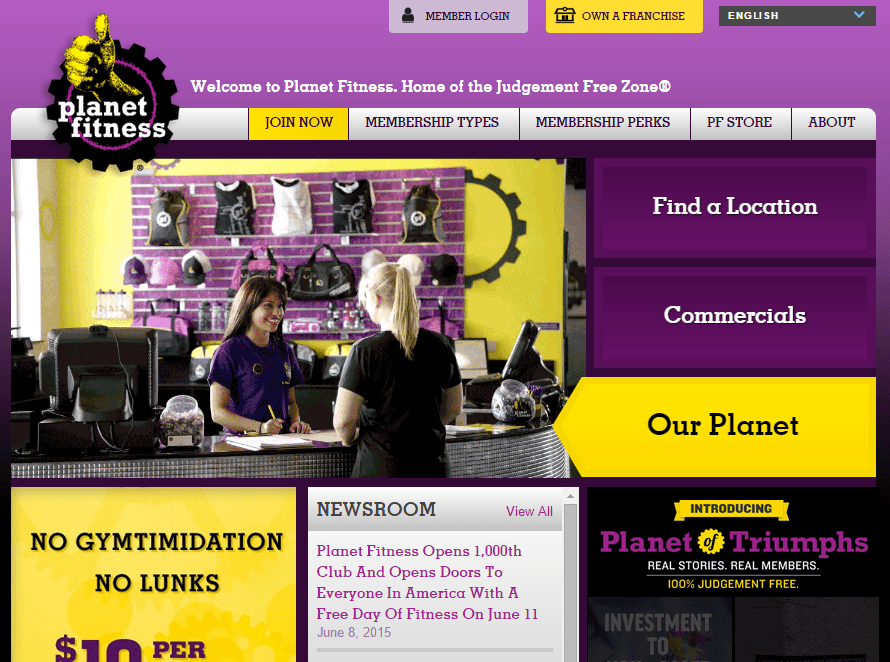
Before you can personalize your email subject lines, though, you have to collect your lead’s name and email address. Derek Halpern, founder of Social Triggers, asks for a person’s first name and email address:

It’s easy to personalize emails with a recipient’s first name, assuming you’ve been collecting names on your opt-in form. If you’re using Getresponse to automate your emails, here’s exactly how to personalize your subject lines – most autoresponder services have similar features:
i). Create a newsletter: Create a newsletter to broadcast to your subscribers as you normally would.
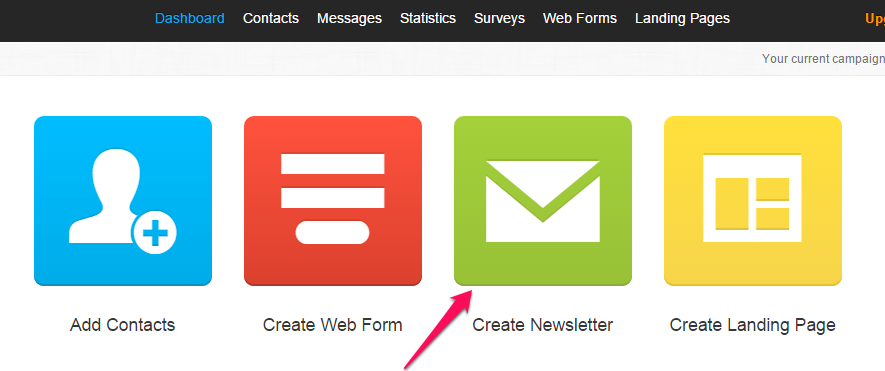
ii). Choose your editor: I prefer to create newsletters with the new email creator. So, I’ll simply select it:
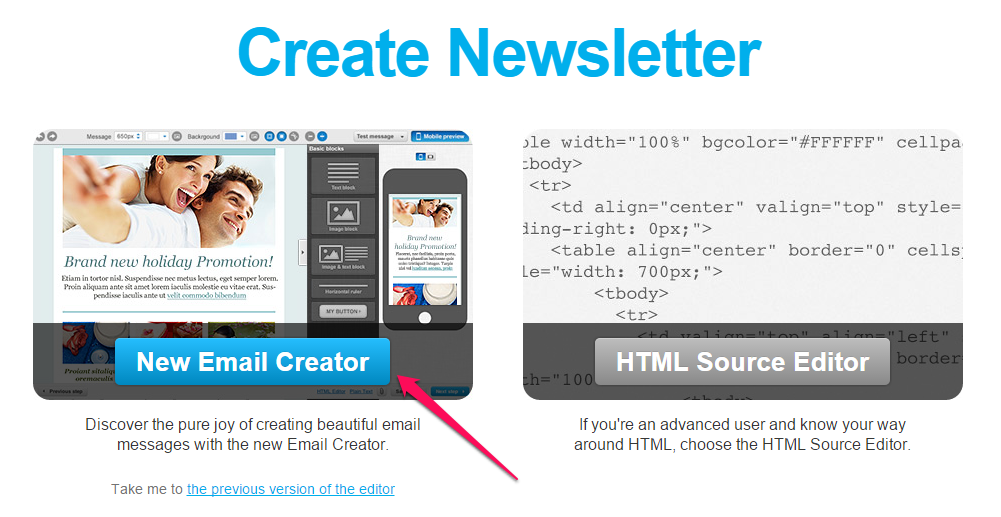
iii). Personalize: It’s time to personal your subject line. You can use the recipient’s first name either at the beginning or at the end of your subject line. Personally, I like placing it at the end:

iv). Track: Make sure that you activate the “click-through rate” slider, so that you can easily track how many people open your email and take action on your links embroidery pattern. Once you’re done with that, click “next,” to write your newsletter.

In all, personalizing your email subject lines and your copy is a great way to nurture and convert your PPC leads. You’ll increase the level of trust that your leads have towards you.
Strategy #5: Plan Your Email Based on Timing & Leads’ Interests
Email timing is critical. When you’re communicating with your leads via email marketing, you’ve got to make sure that you’re doing it at the right time, because timing, to some extent, determines your chances of conversion success.
As people opt into your list, they start to proceed down your marketing funnel, until they hopefully make a purchase. Or, you can think of this process as a conversion pyramid, as depicted in the graphic below:
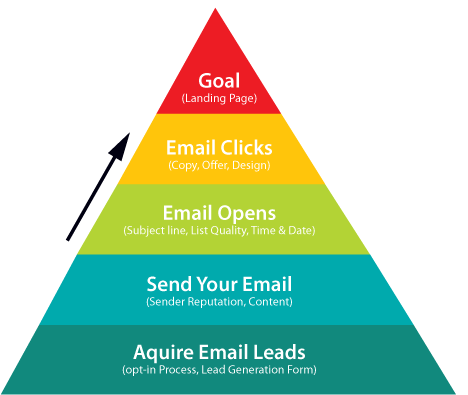
Your content strategy isn’t complete until you understand when and how to deliver your message. You don’t want to send emails when your leads aren’t ready to read them, let alone click through to purchase your product. Otherwise, your emails get pushed further down in a crowded inbox or simply deleted.
For example, a study on consumer behavior reveals that consumers are more likely to respond to your promotional emails when they’re at home relaxing, not when they’re at their workplace.

There’s no one-size-fits-all time to send emails. What suits my subscribers may not work for yours.
Testing is the only way to be sure. However, there are lots of case studies from brands in all sorts of industries who’ve already tested and shared their results.
For instance, Quibb, a professional network that shares industry news and statistics, achieved daily email open rates between 50% and 70%, by identifying the kind of subject lines that their subscribers prefer and the best time to send their newsletters.
Although most email marketers believe that sending emails at 12.00 midnight works best, others have seen a different result. Find your best send times by either testing or by reading case studies in your industry or niche. For example, WordStream shared their best and worst times to send emails. Here’s an excerpt:

But, Econsultancy reported that a MailChimp study found Tuesdays and Thursdays to be the busiest days of the week, which might result in ignored emails. To reiterate: the only way to know for sure is to test.

Ebags, an online retailer, increased their click-through rate by 20% and their conversion rate by 65%, after running several tests to discover the best time to send emails.
You’ll find that it’s a lot easier to nurture and convert your PPC leads when you track their response to your emails.
Determine the times that you acquired those leads. If you see patterns in the timing, it’s a good bet that emails sent at the same time would probably perform better.
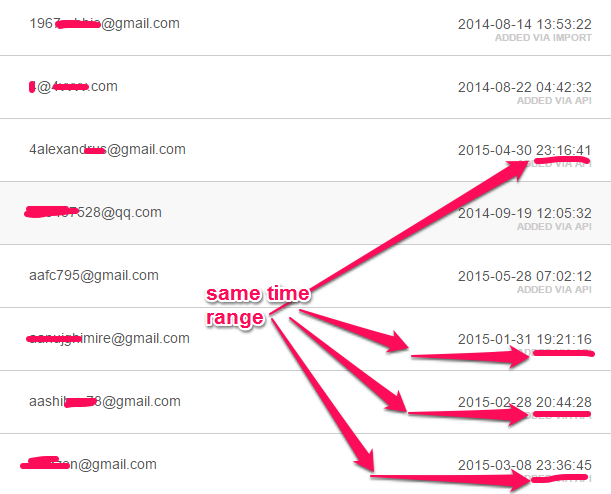
Strategy #6: Develop a Custom Content Strategy
Custom content can help you better nurture your PPC leads herunterladen. According to Dealer E-Process, 61% of customer buying decisions are influenced by custom content.

It’s all about understanding the process – and giving your leads the right information, once they’re signed up to your list.

Custom content is a bit different than content marketing. Here’s how Andrew Boar distinguished both powerful marketing tactics:

So, while custom content is aimed at communicating with existing customers, content marketing focuses on connecting with new prospects and trying to win their hearts.
You’ve already captured your PPC leads. Now what they need is a new set of rules and actionable steps to get results. Custom content will inspire your customers and keep them buying from you – not your competitors.

Custom content shouldn’t be promotional in tone. You can still talk about your product, but, this time, you’re not asking for the sale. Instead, you’re simply educating your customers. It’s about teaching them what they need to know about your product or service.
A great company that delivers good custom content is Evernote. Notice how they created an educational (non-promotional) blog post, while still focusing on their product:
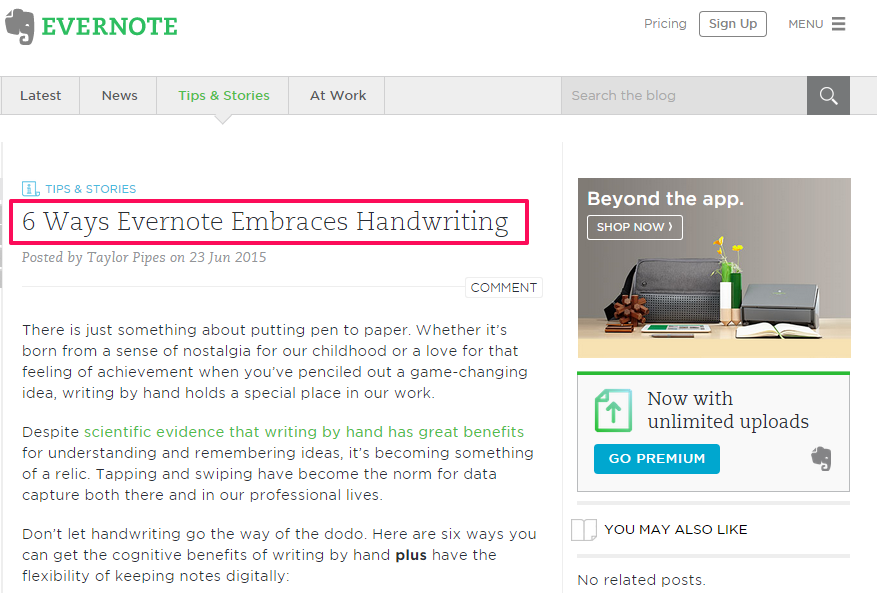
Custom content can also be a guide or ebook that you give away to your existing customers to educate and inform them. A typical example is Social Sprout’s 5 Habits of Successful Social Media Managers.

AWeber has published several guides for their existing customers. Of course, new customers can still download them, but these guides are really tailored to those who already have an AWeber account.
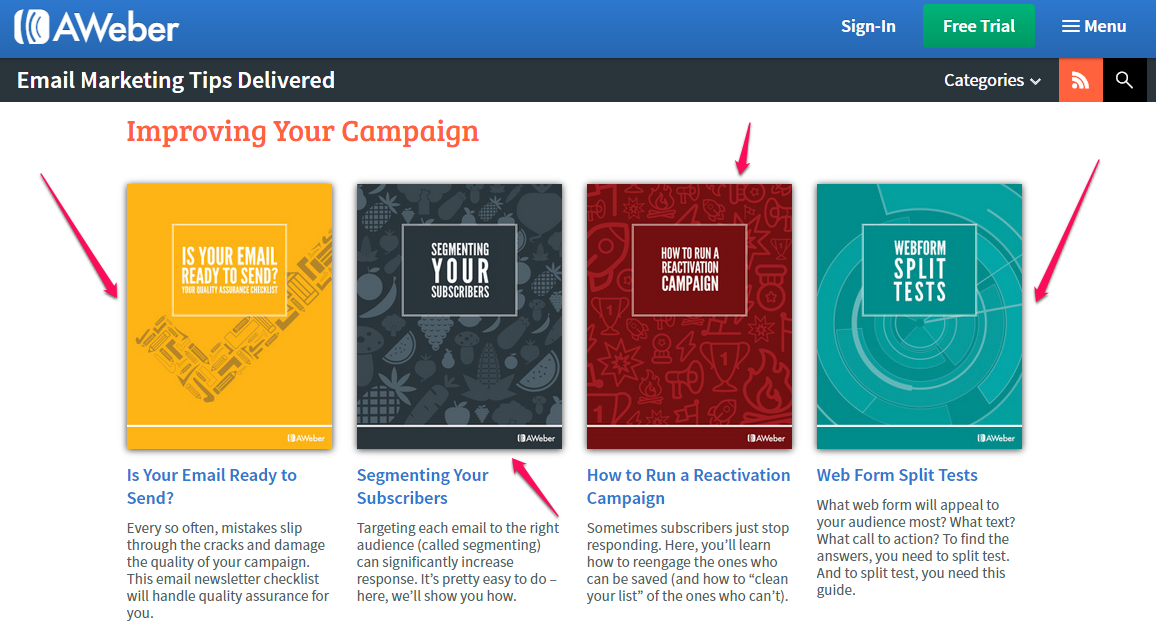
AdEspresso, a Facebook ads management software company, uses custom content to educate their customers on how to get the best ROI from Facebook advertising.
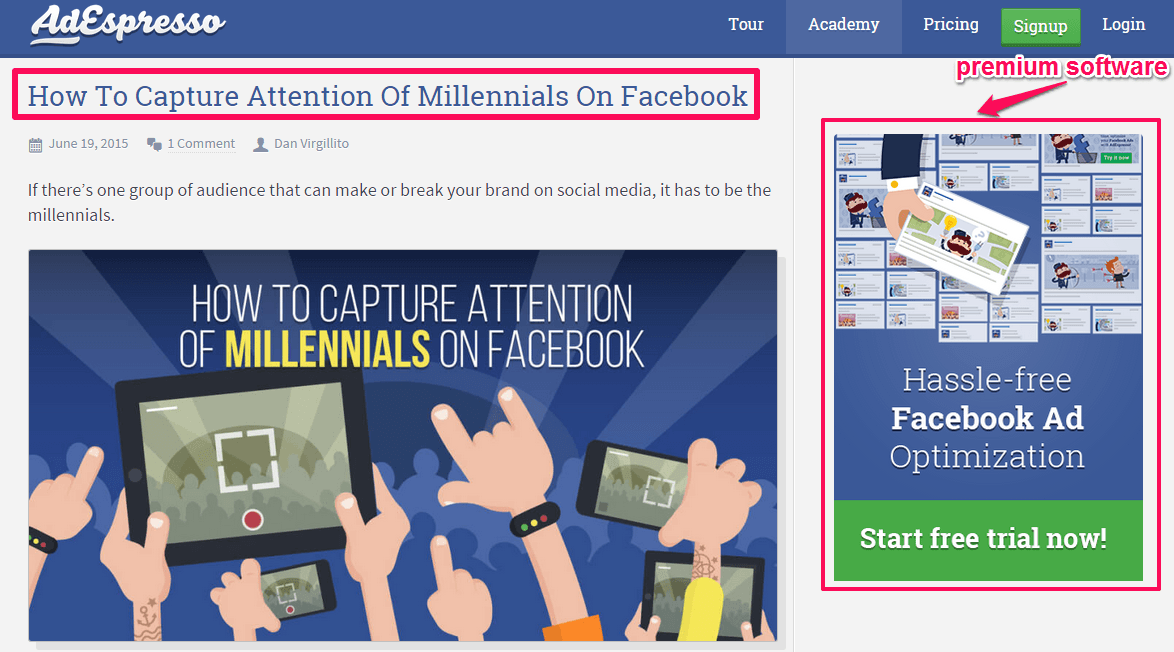
By giving away lots of information for free and allowing new prospects to try their software free for a month, they’ve been able to build a successful company.
While you’re creating custom content, don’t ignore content marketing. You need both. Content marketing drives new leads through your sales funnel and an effective custom content campaign persuades purchasers to come back for more.
So, how do you develop a custom content strategy?
- Define your business goals in 1 – 2 sentences (e.g., “to encourage prospects to try my software free for 30 days and convert them”).
- Identify customers’ pain points. Since they’re already your customers, you could ask them to complete a short online survey.
- Create content around your product’s benefits, starting with the strongest benefit.
KISSmetrics, one of the multi-million dollar software companies that I co-founded, has been creating custom content for a long time. The objective is to tailor our blog posts to meet the demands of existing customers, as well as to persuade new customers to try KISSmetrics for a 30-day free trial solitär für mac kostenlos downloaden.
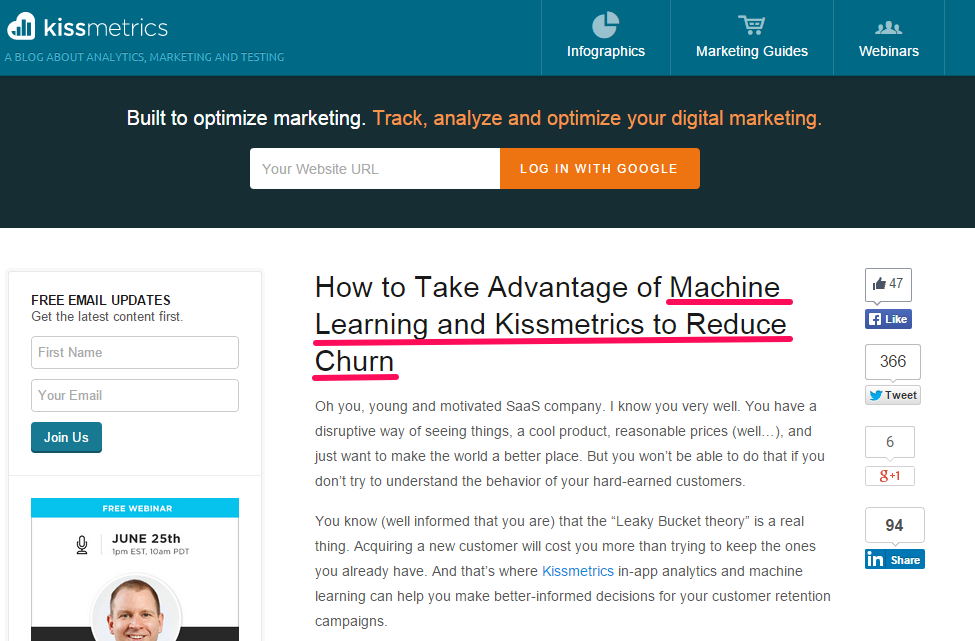
Strategy #7: Create Content Based on the 3Ws (Who, What, When)
Lead nurturing allows marketers to identify their customer’s pain points and create the right type of content to address those needs.
The 3Ws are:
- Who is your audience?
- What do they want?
- When do they want it?
No matter what you do and how valuable your content might be, if you don’t know your audience (who) or if you’re not sending the message at the right time (when) or if you failed to give them the exact information that they want (what), they won’t be drawn to your business.
According to Marketo’s case study, the 3Ws will give your content a quick boost and build trust, because your content will demonstrate that you’re more concerned with relationship-building than with simply making a quick buck.
Of course, if your email list is segmented, it’ll be a lot easier to send the right message that’s relevant to a select group of leads, while you continually nurture other segments.
Several software companies are using email segments, coupled with the 3Ws, to nurture a loyal customer base.
For example, Panaya, a software vendor, used personalization to vary the content that they send their customers, depending on which product they were using.
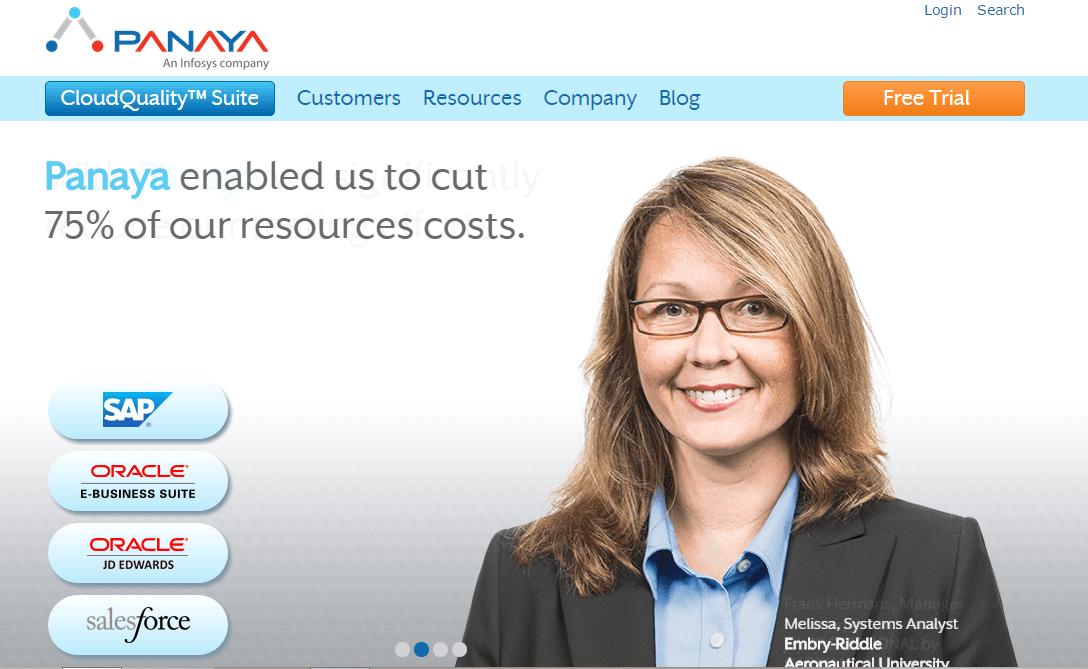
When existing users saw the right message from Panaya, they quickly responded and content consumption increased by a whopping 113%.
There are countless other success stories of brands that increased lead acquisition, sales and revenue just by creating content based on the 3Ws.

For example, High Street App, a shopping app platform, increased revenue by sending messages containing relevant and valuable information at the right time and under the right circumstances (based on customer feedback).
They also saw an increase in their customer base. And, according to this research, targeted push notifications increased the number of people using the app by 300%.
Strategy #8: Share Customer Success Stories
The easiest and most trust-inducing way for your leads to measure the success of your business is through customer success stories. Do you have stories that you can share?
Even on Amazon and other ecommerce sites, customer reviews directly impact sales. According to Search Engine Land, if there are multiple customer reviews, people are more likely to buy the product.

Whether it’s social proof, social mentions, customer reviews, testimonials, case studies or a customer success story, it’s going to affect how your leads will perceive you.
Let me share an example with you. When you visit my consulting page, you’ll see Gawker Media’s traffic chart, above-the-fold.
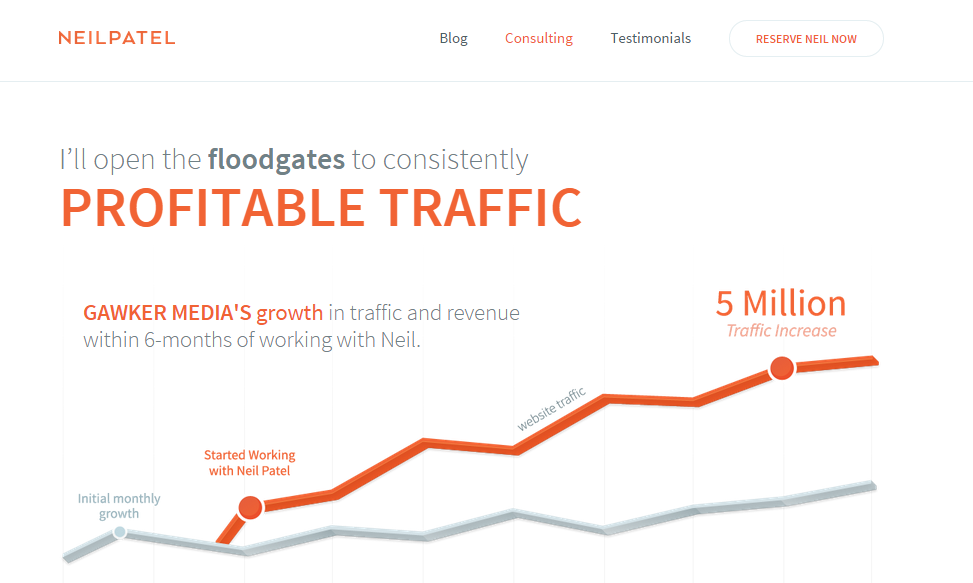
Trust me, I didn’t put that there just to impress you video twitter downloaden. I did it to give potential clients proof that I’ve got what it takes to get results for them. For this reason, my lead conversion rate is pretty decent.
As you scroll down the page, you’ll see additional testimonials from my clients. Take a look:

A recent study by Econsultancy revealed that adding product reviews and ratings to websites builds trust and increases sales. In turn, online retailers can initiate communication with customers, while giving them what they need to make informed purchases.

According to Tim Ash, CEO of SiteTuners, “people rely on testimonials daily, as part of their decision-making process” whether they’re choosing a movie to watch or which dentist to make an appointment with.
It’s the same with your leads. Success stories can encourage your leads to tell others (word of mouth) about your brand. When your leads perceive customers’ stories as true and relevant to their own experiences, they’ll be more willing to buy from you.
And, success stories, which are usually filled with positive reviews, will similarly influence purchases. In fact, this research showed that 58% of customers trust a business that has earned positive online reviews.

Above all, focus on solving your client’s problems. The more that you’re able to meet them at the point of their needs, the more likely it is that you’ll get testimonials from them.
However, there are times when satisfied customers are too busy or aren’t interested in writing the positive reviews that you need.
If that’s the case, don’t hold back. Send a short, polite email and ask them to share their experiences or a short testimonial. You’ll be pleasantly surprised at the responses that you’ll get.
Strategy #9: Create a Visual Content Course for First-Time Leads
The brain is significantly more receptive to visual content than it is to plain text. You’ve read so many good things about visual marketing, but what are you doing about it?

You know it can increase your engagement, help you cement the relationship with your leads and provide a deeper understanding of your products/services.
But, all of those statistics will do you no good, if you just accumulate them. You’ve got to do something with that knowledge. According to Mike Curtin, “Knowledge is not power. The application of knowledge is power.”
One of the things that you can do to nurture your leads is to provide them with visually-appealing content. Instead of sending straight-text blog posts or articles, like every other marketer does, improve the value of your content by making it visual.
Create a visual content course: Jeff Molander uses three free videos to nurture and engage his customers. And, Scotty H. Young uses videos to teach students and startup entrepreneurs how to get better at what they do.
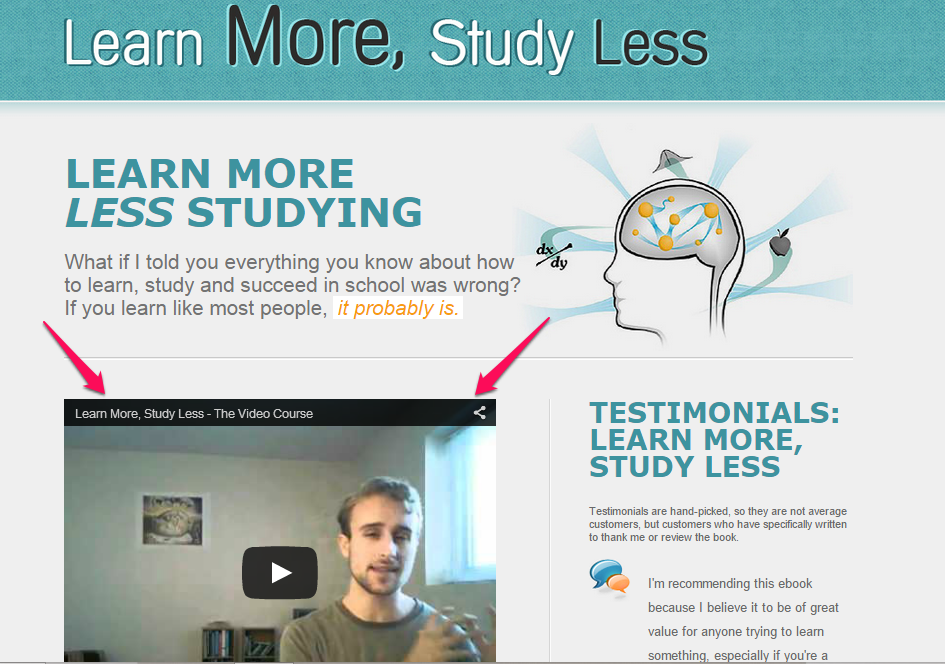
An online course that uses visual assets, such as infographics, videos and images, will deliver a richer experience walter schriftart downloaden.
Some of the factors you’d consider when creating an ebook are the same for visual content. But, the impact that they each deliver will differ. An engaging online course is great for lead nurturing and can improve sales conversion.

When I created QuickSprout University, my goal was to help my visitors master a particular skill – keyword research, for example. As a goal for my videos, I decided that after someone watches my videos, they won’t have to watch another video or even read a blog post on the same topic, because my videos will be thorough and full of information.

There are several reasons why people prefer online courses. One of the biggest reasons is the convenience of moving at your own pace.
The Open Education Database found that one of the advantages of an online course, over classroom learning, is that it gives students “more interaction and greater ability to concentrate.”
And, that’s why visual online learning is in such demand. Just look at the number of people currently learning at Udemy, an online training platform.

So how do you create an online course that you can use to nurture and convert your PPC leads?
Follow these simple tips:
- Identify what customers want (send survey questionnaires, extract insights from comments, etc.).
- Give your online course a compelling title (e.g. Build Your List in 21 Days, Get Your First 1000 Visitors Program, 15 Days to Double Your Sales, etc).
- Know the best visual asset to use. Is it better to create videos or infographics? Go ahead and try one format, to judge the response. Then, learn from there.
- Create your content. Gather relevant information and data. You can use visual.ly to get a premium infographic design or hire a professional at dribbble.com.
- Create your video content. Upload to YouTube or Vimeo, then share the published URL with your leads and customers via your email autoresponder.
- In all, you should leverage multimedia – that is, create videos as well as infographics. And, use podcasts to appeal to those who prefer to listen.
- Podcasts are also a great way to educate and engage your leads, when they’re driving or if they just don’t like video. John Lee Dumas built a loyal custom base through podcasting.

Use every appropriate content format to nurture your leads and build a relationship with them, even before you ask them to buy.
Conclusion
Pay per click advertising provides quick results, unlike SEO, which takes a lot of time to pay off in generated leads. If you’ve got a budget to play with, you can kickstart your lead generation using Google AdWords or Facebook PPC.
All in all, you should embrace both PPC and SEO, if you want to drive both a positive short-term and a positive long-term ROI fifa 19 the journey sprache herunterladen.
Converting your leads to customers is pretty easy, when you’ve earned their trust. And, trust comes from a deeper relationship with people.
As you nurture your leads, using the various content marketing and custom content best practices, you’ll build a loyal customer base and grow your revenue.
How do you inform and inspire your your leads or prospects to buy from you?



